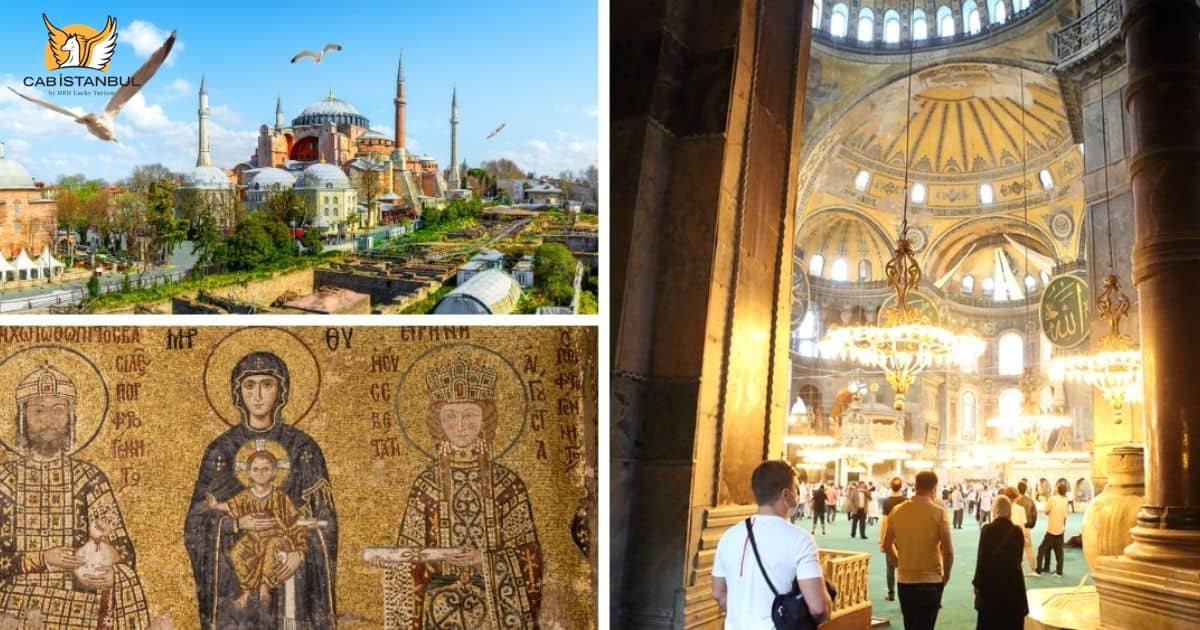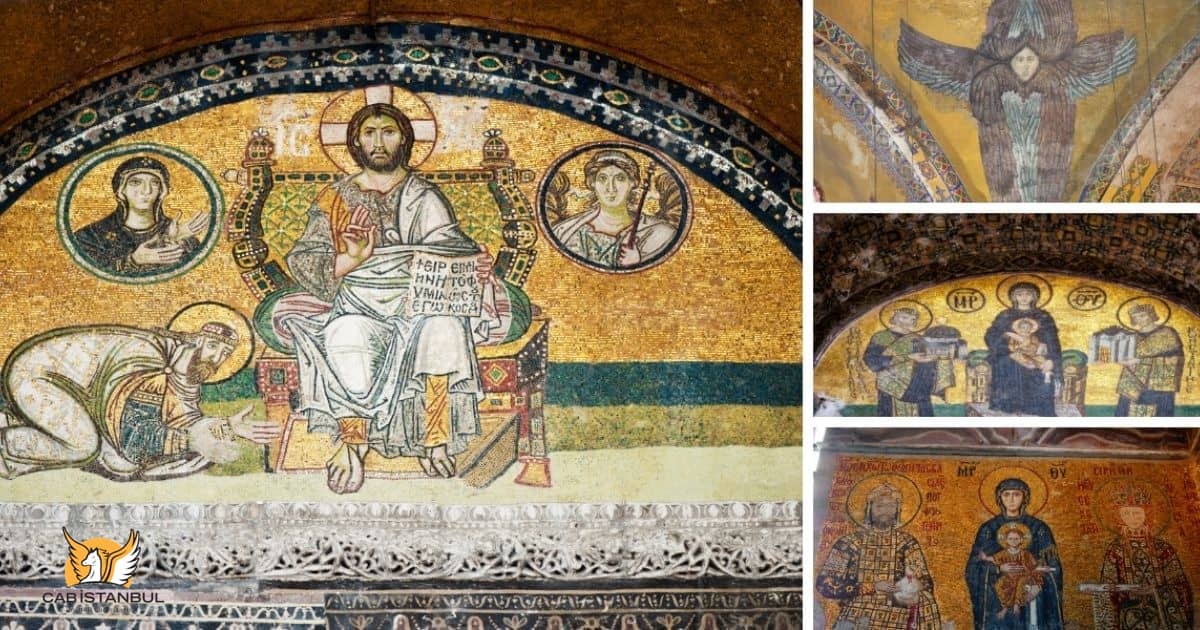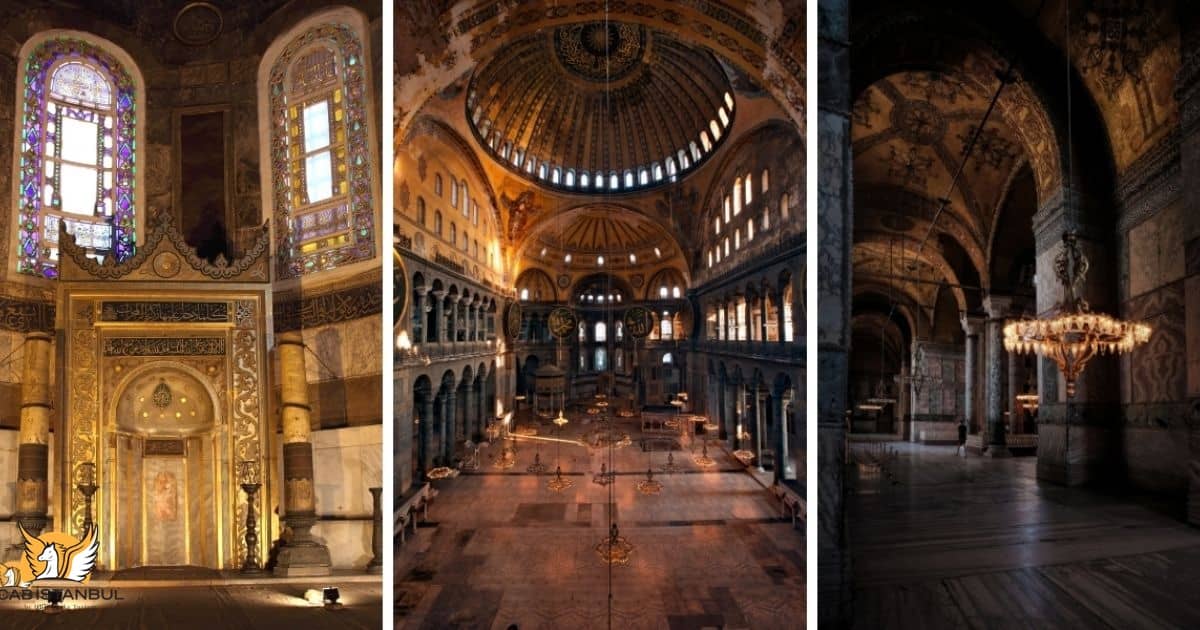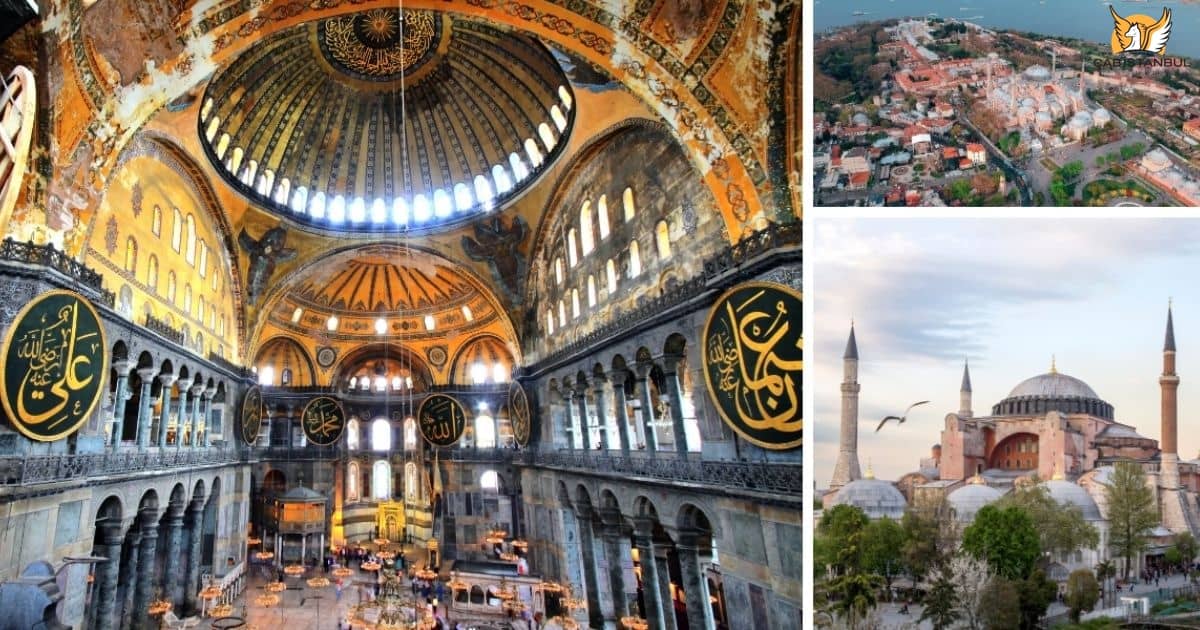Hagia Sophia Turkey
2026-01-05

Hagia Sophia Museum: Church to Mosque
Hagia Sophia, Mosque, Church to Museum where the echoes of history resonate within its majestic walls. Originally known as "Holy Wisdom" in Greek, Hagia Sophia has stood as a testament to architectural marvels and cultural transformations since its construction in the 6th century AD. Once a pagan temple, Hagia Sophia was transformed into a Christian cathedral during the Byzantine era under the reign of Emperor Justinian I. Its construction heralded a new era of architectural innovation, with its soaring dome and intricate mosaics captivating the hearts and minds of all who beheld its splendor.
However, Hagia Sophia's destiny took a dramatic turn with the Ottoman conquest of Constantinople in 1453, when it was converted into a mosque. This transition marked a significant chapter in the monument's history, as Islamic influences merged with its Byzantine roots, resulting in a unique blend of architectural styles and religious symbolism. In the early 20th century, Hagia Sophia underwent yet another transformation, this time emerging as a museum under the Republic of Turkey. This transition symbolized a commitment to preserving the monument's cultural heritage and allowing visitors from around the world to appreciate its historical significance. As you step through the Emperor's Gate, you'll be greeted by a breathtaking array of architectural wonders, from the intricately carved columns to the exquisite marbles that adorn its interior. The mosaic masterpieces that adorn its walls tell stories of religious devotion and artistic brilliance, offering glimpses into the past and the diverse cultures that have shaped Hagia Sophia's identity. Legend has it that Hagia Sophia's dome was inspired by the heavens themselves, soaring to incredible heights that defy imagination. Surrounding it, graceful minarets pierce the skyline, while intricate calligraphy adorns the walls, bearing witness to the monument's enduring legacy as a symbol of unity and harmony.
Discover Istanbul's historic lanes with Cab İstanbul car and driver service. Tailored for discerning explorers, this service alleviates the hassles of navigation, offering a luxurious and personalized journey through the city's marvels. From the awe-inspiring Hagia Sophia to the myriad of other enchanting sites, our private transfers ensure a comfortable and enriching exploration.
Aya Sophia Mosque
St Sophia Istanbul
Aya Sophia Church
The story of Aya Sophia Istanbul (From Church to Mosque) is one of transformation, resilience, and unparalleled architectural brilliance. The construction of this iconic structure began during the reign of Constantine the Great (324-337), following his legitimization of Christianity. The first edifice, built on the prominent Sarayburnu Hill in the 4th century, was inaugurated under his son, Constantius II, on February 15, 360. However, this original basilica faced devastation by fire on June 20, 404, during the turbulent exile of Patriarch Ioannis Chrysostomos.
The second iteration, constructed by Emperor Theodosius II (408-450), was inaugurated on October 10, 415, but met a similar fate when it was destroyed during the Nika Revolt on January 13-14, 532. These setbacks laid the foundation for a grander vision of Hagia Sophia, which would redefine the architectural landscape of Istanbul.
Name of Hagia Sophia
Name of Hagia Sophia, The Evolution of Holy Wisdom: Originally known as the Great Church (Megale Ecclesia), the title Hagia Sophia—meaning Holy Wisdom—was adopted in the 5th century. Contrary to popular belief, the name does not reference a saint but embodies the Christian concept of Thea Sophia (Divine Wisdom). Following the conquest of Constantinople in 1453, it became widely known as Hagia Sophia, symbolizing the seamless blend of faith and history that continues to define it today.
Hagia Sophia History
After the ruins of the previous structures, Emperor Justinian I envisioned a temple surpassing all others in magnificence. Entrusting this monumental task to Anthimios of Tralles and Isidorus of Miletus, construction began on February 23, 532. As recorded by the historian Procopius, the Hagia Sophia Istanbul was completed in just five years, with its grand inauguration taking place on December 27, 537. This remarkable feat of engineering and design established Hagia Sophia as a symbol of Byzantine ingenuity and a centerpiece of global architectural heritage.
Hagia Sophia Builder
The creation of Hagia Sophia is steeped in imperial ambition and spiritual dedication. Emperor Justinian I sought to craft a structure that would stand as a testament to divine inspiration and the power of the Byzantine Empire. Architects Isidore of Miletus and Anthemius of Tralles employed cutting-edge techniques, integrating innovative designs and materials sourced from across the empire. This architectural marvel not only fulfilled the emperor’s vision but also bridged the gap between the Christian cathedral, the Islamic mosque, and the museum it would later become.
Saint Sophia Constantinople
The third and most celebrated iteration of Saint Sophia Constantinople marked the pinnacle of Byzantine architectural achievement. Commissioned by Emperor Justinian I, the collaboration between Isidore of Miletus and Anthemius of Tralles resulted in a masterpiece that utilized revolutionary engineering techniques. Completed in just five years, Hagia Sophia ascended as a symbol of spiritual and imperial glory, leaving a lasting impression on all who encountered its awe-inspiring domes and intricately designed interiors.
Today, Aya Sophia stands not only as a monument of historical significance but also as a testament to the enduring legacy of human creativity and devotion.
Hagia Sophia Church

Aya Sofya Museum
Aya Sofya Museum, an iconic symbol of Istanbul, encapsulates the tumultuous journey of Hagia Sophia through centuries of religious, political, and cultural transformations. Following the Ottoman conquest of Constantinople in 1453, Hagia Sophia transitioned into a mosque, blending Islamic architectural elements with its Byzantine heritage. In 1935, under the decree of Atatürk and the Council of Ministers, it became a museum, representing Turkey’s secular ideals and modernization efforts. However, its reversion to a mosque in recent years has reignited global debates on its legacy, cultural significance, and role in the 21st century.
The transformation of Hagia Sophia into a museum in 1935 marked a pivotal moment in Turkey’s modernization journey. The decree by Atatürk and the Council of Ministers symbolized a new era of secularism and cultural preservation. Within its walls, the exquisite mosaics tell stories of artistry that emerged after the iconoclastic disputes of the 8th and 9th centuries. In 1985, Hagia Sophia was inscribed as a UNESCO World Heritage Site under the Historic Districts of Istanbul, affirming its historical and architectural grandeur.
The Emperor’s Gate
The Emperor’s Gate, the grandest entrance of Aya Sofya, narrates tales of royal ceremonies and religious rites. This 7-meter-tall doorway, framed in bronze and oak, was reserved exclusively for the emperor and his retinue. Dating back to the 6th century, its bronze panels are steeped in mystery, with legends suggesting the use of materials from Noah’s Ark or the ark of the sacred tablets. Among its intricate designs are the earliest embroideries discovered in Hagia Sophia, including Poseidon’s trident and dolphin motifs—symbolic guardians against earthquakes—and depictions of the Holy Grail in temple imagery.
The Beautiful Door: A Gate of Antiquity
Located in the southern inner narthex, the Beautiful Door, also known as the Vestibule Gate, dates back to the 2nd century BC. This ancient bronze artifact, adorned with vegetal and geometric reliefs, was a gift from Tarsus and installed by Emperor Theophilos in 838. Eastern Roman emperors passed through this gate to enter the inner narthex, continuing into the main expanse of Hagia Sophia. Inscribed on its wings are invocations of divine aid, imperial names, and an 838 monogram, offering a glimpse into the spiritual and political ethos of the era.
Masjid Hagia Sophia
The history of Masjid Hagia Sophia reflects centuries of transformation under different rulers and religions. After its establishment as a mosque in 1453, Hagia Sophia underwent changes blending Islamic elements with its Byzantine architecture. Its conversion into a museum in 1935 highlighted Turkey’s secular ideals, while recent events have seen its reversion to a mosque, sparking global discussions about its cultural and historical significance. As a place of worship, museum, and now a mosque again, Hagia Sophia remains a dynamic symbol of Istanbul’s layered history.
A World Heritage Treasure
In 1985, Hagia Sophia was recognized by UNESCO as part of the Historic Districts of Istanbul. This designation celebrated its unique architecture, historical importance, and role as a bridge between civilizations. Today, Aya Sofya Museum continues to inspire awe, serving as a testament to the resilience and enduring legacy of one of the world’s greatest architectural masterpieces.
Santa Sophia Istanbul

Hagia Sophia Mosaics
The mosaics of Hagia Sophia are not just decorations but vivid storytellers of its rich history. Blending artistic brilliance with spiritual symbolism, these mosaics offer an unparalleled glimpse into the religious and cultural shifts of empires. Alongside its monumental columns and soaring dome, the mosaics of Hagia Sophia Istanbul transform it into a timeless masterpiece that bridges eras and ideologies.
Dome of Hagia Sophia
The soaring dome of Hagia Sophia is an architectural marvel that redefined design in its era. Standing 55.60 meters high and spanning a diameter of 31.87 meters north-south and 30.86 meters east-west, the dome epitomizes engineering brilliance. Crafted from light yet durable bricks made from the soil of Rhodes, the dome was designed to withstand the tremors of time and nature. This iconic feature not only crowns Hagia Sophia Istanbul but also highlights the ingenuity of Byzantine architecture.
Mosaic of Apse
The apse mosaics of Hagia Sophia emerged as a beacon of devotion following the end of the iconoclastic period in 843. Dominating the apse is a breathtaking depiction of the Virgin Mary, seated on a throne and holding the infant Jesus. This mosaic embodies theological essence while evoking profound spiritual reverence. Its intricate craftsmanship reflects the mastery of the era, making it a focal point of Christian iconography.
Angelic Mosaics
Adorning the apse are the faint remnants of angelic mosaics, crafted in the 9th century. Although much of their imagery has been lost to time, fragments of Michael’s wing and portions of a foot remain as testaments to their celestial artistry. These mosaics, silent yet powerful, capture the ethereal beauty and reverence of a bygone era, offering a glimpse into the divine symbolism that once filled Hagia Sophia’s interiors.
Hagia Sophia Cathedral

Hagia Sophia Builder
Crafting a Legacy of Faith and Innovation: The construction and evolution of Hagia Sophia reflect the intersection of faith, imperial aspirations, and architectural brilliance. From its Byzantine origins to the Islamic additions post-Ottoman conquest, Hagia Sophia embodies a fusion of Christian and Islamic legacies, transforming it into a timeless symbol of spiritual and cultural confluence. Below, we explore key features introduced during its transformation.
The Omphalion
Coronation Chamber Reimagined: The Omphalion, originally a ceremonial coronation chamber of Eastern Rome, showcases an intricate arrangement of colorful circular marble inlays. Positioned within a larger marble circle, these motifs and cutouts symbolize imperial grandeur, serving as silent witnesses to the ceremonies of emperors crowned within Hagia Sophia.
Wishing Pillar
A Legend Carved in Stone: Located in the northwest corner, the Wishing Pillar carries an aura of mystery and legend. Stories range from Emperor Justinian finding relief from a headache to miraculous alignments of the edifice towards the Holy Kaaba. Visitors still partake in the tradition of making a wish by inserting their thumb into the carved shaft and turning it clockwise, resonating with centuries of hope and belief.
Minarets of Hagia Sophia
Towers of Confluence: Following the Ottoman conquest of Istanbul, Sultan Mehmet II envisioned Hagia Sophia as a mosque, introducing minarets to its structure. These towers evolved over time, from simple wooden constructs to the harmoniously designed minarets by the renowned architect Mimar Sinan. Each minaret represents an era of architectural innovation and imperial ambition, seamlessly blending with the monument's grandeur.
Buttresses
Architectural Sustenance: The immense dome of Hagia Sophia required reinforcements to withstand structural stresses. Architect Mimar Sinan added arched supports, heavy buttresses, and strategically spaced walls to mitigate the dome's compression forces. These additions exemplify the evolving architectural techniques that have sustained the dome for centuries.
Marble Cubes
Hellenistic Legacy in a Sultan's Era: Two colossal marble cubes, originating from Pergamon during the Hellenistic period, were brought to Hagia Sophia during Sultan Murad III’s reign. These monolithic cubes, used for storing sherbet during sacred ceremonies, serve as a bridge between ancient traditions and Ottoman innovations.
The Minbar
A Pulpit of Marble Elegance: The Minbar, dating to the 16th century and crafted during Sultan Murad III’s era, stands near the Mihrab as a remarkable example of Ottoman marble craftsmanship. Its elegant design highlights the artistic ingenuity of the time, symbolizing authority and reverence.
Sultan’s Council
A Majestic Assembly: Established in 1728 during Sultan Ahmed III’s renovations and later updated in 1847, the Sultan’s Council or Majlis represents architectural sophistication. The hexagonal structure, elevated on columns with a gilded wooden cage, exemplifies the grandeur of imperial assembly spaces in Hagia Sophia.
Mihrab of Hagia Sophia
A Sacred Niche: The Mihrab, a spiritual focal point introduced by the Ottomans, features intricate sunburst and star motifs. Over several restorations, it evolved into a polygonal niche adorned with elegant embellishments. Flanked by massive candelabras from King Matthias I’s palace church, the Mihrab encapsulates the spiritual essence and artistic refinement of Ottoman-era Hagia Sophia.
Aya Sophia Mosque Istanbul

Hagia Sophia Masjid
A Confluence of Faith and Artistry: Hagia Sophia Masjid stands as a testament to the harmonious blend of Islamic artistry and architectural brilliance. Following the Ottoman conquest, this iconic structure was transformed into a mosque, enriched with Islamic calligraphy, tile art, and unique architectural elements. These additions narrate stories of faith, cultural synthesis, and imperial vision, showcasing the enduring legacy of Hagia Sophia Istanbul as both a spiritual and artistic masterpiece.
Mihrab Tiles
A Reflection of Islamic Artistry: Flanking the Mihrab are panels adorned with exquisite tiles that highlight the intricate beauty of Islamic artistry. The left panel features a floral motif, representing the artistic legacy of the old Sultan’s era, crafted from 16th-century Iznik tiles. The right panel, in contrast, offers a segmented depiction of the Kaaba and the tomb of Prophet Muhammad, weaving sacred narratives through vibrant tilework. Together, these panels encapsulate the essence of Islamic devotion and artistic innovation.
Calligraphy Panels
Echoes of Imperial Legacy: The calligraphy panels beside the Mihrab reflect the rich heritage of Ottoman sultans. These masterpieces include works by notable sultans such as Mahmud, Ahmed, and Mustafa, whose inscriptions capture the spirit of the imperial era. Contributions from renowned calligraphers like Mehmet Yasari and Shiholislam Veliuddin Effendi further elevate the panels, showcasing the pinnacle of Islamic calligraphy in Hagia Sophia.
Hagia Sophia Fountain
An Oasis of Turkish Architecture: Commissioned during the restoration by Sultan Mahmud I in 1740-1741, the Hagia Sophia fountain is a beautiful fusion of classical Turkish and Baroque styles. Its eight-columned portico surrounds a 16-section marble water pool, capped with a dome adorned with gilded bands against a blue background. This architectural gem embodies the tranquil aesthetics of Turkish design while enhancing the spiritual experience of worshippers.
Sultan Mahmud Library
A Trove of Knowledge: Established on April 21, 1740, the Sultan Mahmud Library once housed a collection of 4,000 works, ranging from imperial treasures to donated manuscripts. This intellectual haven highlights the scholarly pursuits of Sultan Mahmud I and underscores Hagia Sophia’s role as not only a place of worship but also a center for knowledge and literary exploration.

Write a Comment !